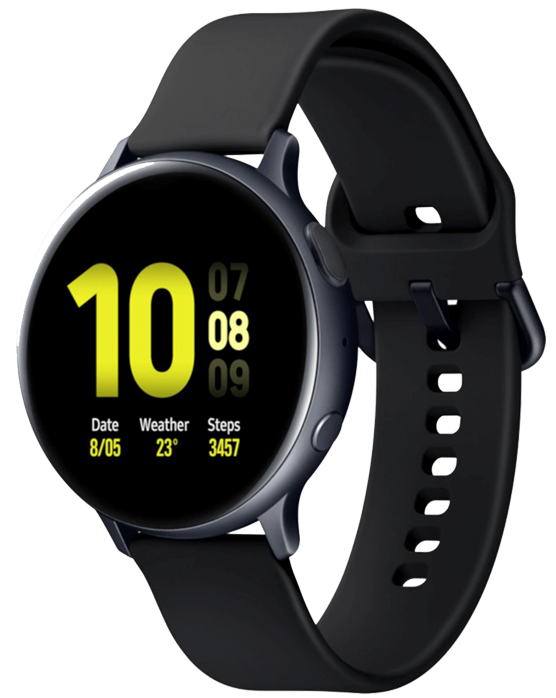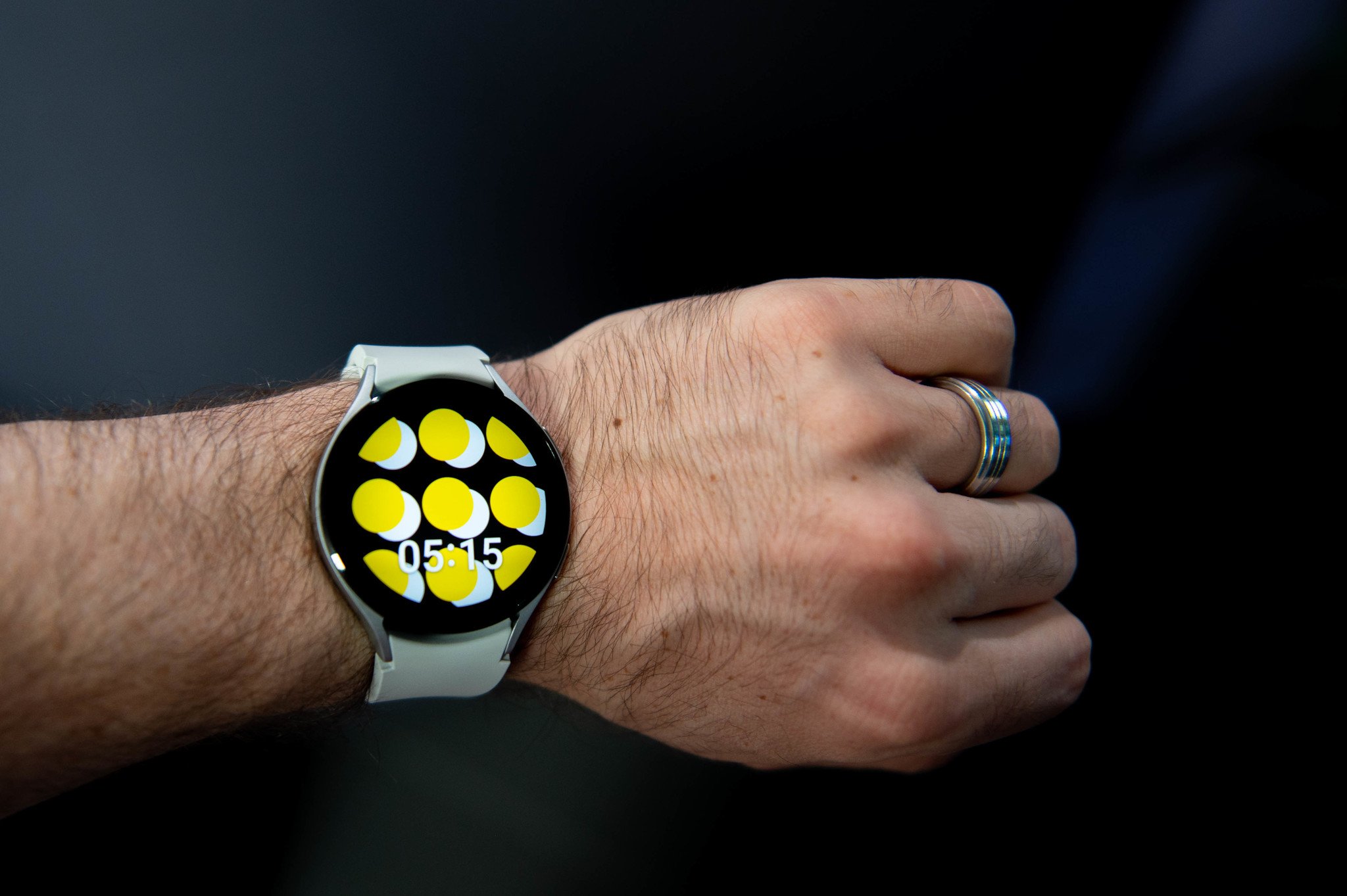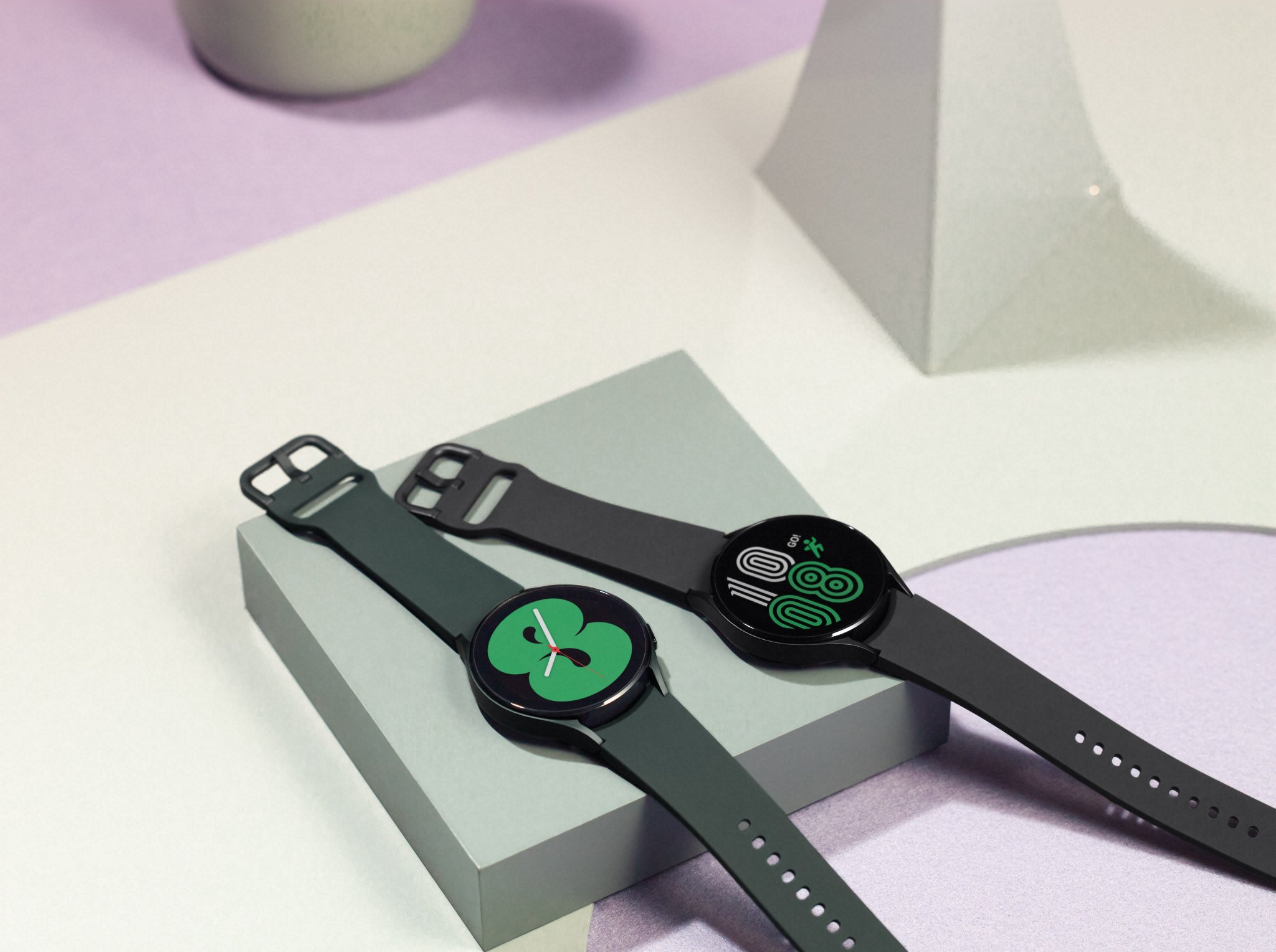Expand your horizons
Samsung Galaxy Watch 4
Pros
- GPS, HRM, NFC
- New Wear OS 3
- Optional LTE
- Improved health tracking
- Capacitive rotating bezel
Cons
- More expensive
If you simply cannot help but get your hands on the latest and greatest tech, you'll be glad to know the Samsung Galaxy Watch 4 is now yours for the taking. The sleek design carries over some familiar elements from past models, like the capacitive rotating bezel. You also get a BioActive sensor, improved health/fitness tracking, and Wear OS 3.
Effortless classic
Samsung Galaxy Watch Active 2
Pros
- GPS, HRM, NFC
- Optional LTE
- Excellent health/fitness tracking
- Capacitive rotating bezel
- More affordable
Cons
- No Wear OS 3 support
It's been around for a while now, but the Galaxy Watch Active 2 is still one of the best Android smartwatches out there. Sure, it might not have the successor's new BioActive sensor, but you still get heart-rate monitoring, ECG, blood oxygen tracking, and more. You'll also be able to opt for LTE connectivity if you see fit.
Samsung Galaxy Watch 4 vs. Samsung Galaxy Watch Active 2: A different kind of upgrade
You may not realize it from the name, but the new Samsung Galaxy Watch 4 is the successor to the beloved Galaxy Watch Active 2. It may not have "active" in the name anymore, but this Android smartwatch is still very much focused on health and fitness.
Not to mention that it's Samsung's first-ever One UI watch powered by the new Wear OS 3. There's a lot to unpack when deciding whether you should upgrade to the Samsung Galaxy Watch 4 from the Samsung Galaxy Watch Active 2. Obviously, if you want to experience a Galaxy Watch powered by Wear OS, this is your chance. You'll experience smooth performance and improved health tracking as well. For some users, the answer is obvious. Others might need a little more convincing.
Embrace change with the Samsung Galaxy Watch 4
Performing a side-by-side comparison of the Samsung Galaxy Watch 4 and the Samsung Galaxy Watch Active 2 will show a few differences in the physical design, but also a lot of similarities. Both watches are available in 40mm and 44mm cases and have a capacitive rotating bezel around the edge of the display.
Unlike the previous models, the Galaxy Watch 4 is only available in an aluminum case. If you find yourself drawn to a stainless steel model, you should consider the Galaxy Watch 4 Classic, which has a physical rotating bezel rather than a digital one. The Galaxy Watch 4 models are also very lightweight, which is perfect for active individuals.
| Samsung Galaxy Watch 4 | Samsung Galaxy Watch Active 2 | |
|---|---|---|
| Display | 1.2-inch or 1.4-inch Super AMOLED | 1.2-inch or 1.4-inch Super AMOLED |
| Dimensions | 40.4 x 39.3 x 9.8mm 44.4 x 43.3 x 9.8mm |
40x40x10.9mm 44 x 44 x 10.9mm |
| Weight | 25.9 - 30.3 g | 26 - 30 g |
| Connectivity | Bluetooth 5.0, Wi-Fi b/g/n, LTE (select models) | Bluetooth 5.0, Wi-Fi b/g/n, LTE (select models) |
| Water-resistance | 5ATM+ IP68 / MIL-STD-810G | 5ATM+ IP68 / MIL-STD-810G |
| Battery life | 40 hours (varies by model) | 2 days (varies by model) |
| Sensors | BioActive sensor (HRM), electrocardiogram (ECG), accelerometer, gyroscope, geomagnetic, barometer, ambient light sensor | HRM, electrocardiogram (ECG), accelerometer, gyroscope, barometer, ambient light sensor |
| Colors | Aluminum: black, silver, Pink Gold, green | Aluminum: Aqua Black, Cloud Silver, Pink Gold Stainless steel: black, gold silver |
| Operating system | Wear OS 3 | Tizen OS |
| Built-in GPS | ✔️ | ✔️ |
| NFC Payments | ✔️ | ✔️ |
| BIA | ✔️ | ❌ |
| Optional LTE | ✔️ | ✔️ |
Regardless of whether you choose the Samsung Galaxy Watch 4 or the Galaxy Watch 4 Classic, you'll get better internal specs. Both models offer 1.5GB of RAM and 16GB of internal storage, which is quite an improvement from the predecessor. What stays the same? You'll have 5 ATM + IP68 water-resistance ratings as well as MIL-STD-810G durability. You also get Wi-Fi connectivity and optional LTE connectivity.
Most people will agree the biggest change is the operating system. There's been a lot of buildup to this, so by now, you probably know that the Samsung Galaxy Watch 4 is the first smartwatch to run on Wear OS 3. It's also the first Wear OS device to be powered by an Exynos SoC. The 5nm processor boasts a 20% faster CPU and 50% more RAM. You can expect smoother and more effortless performance all around.
The Galaxy Watch 4 Series also offers improved health sensors. The star of the show is the new 3-in-1 BioActive sensor, which consists of a single chip designed to take various measurements. Samsung states that this chip places the measurement tool closer to the user's skin to make measurement more precise. The BioActive chip runs three sensors: optical heart rate, electrical heart, and Bioelectrical Impedance Analysis (BIA).
A new addition to the Galaxy Watch 4 is the BIA feature, which measures your overall body composition.
This allows you to monitor your heart rate, take an ECG reading, and measure your blood oxygen saturation. These features were available on the Galaxy Watch Active 2, but now the sensors are contained in one chip. A new addition to the Galaxy Watch 4 is the BIA feature, which measures your overall body composition. This new tool provides a closer look at your health with key measurements such as skeletal muscle mass, basal metabolic rate, body fat percentage, and more.
Sleep tracking was already a solid feature on the Galaxy Watch Active 2, but Samsung took it further with the Galaxy Watch 4. For example, a compatible smartphone can now detect the sound of your snores. When you combine this data with your blood oxygen levels during sleep and advanced Sleep Scores, you'll have a much better understanding of your sleep patterns so you can improve your rest.
It's important to note that you still need to have the Samsung Health Monitor app installed on your smartphone to use these features regardless of these improvements. If you're not aware, that app is only available for download via the Samsung Galaxy Store, which is only available on Samsung Galaxy smartphones. In short, if you don't have a Samsung-branded Android phone, you're going to miss out on a lot. At launch, there's also no iOS compatibility, and Samsung didn't provide any background on when or if that might change.
Stick to what you know with the Samsung Galaxy Watch Active 2
Some people are creatures of habit, and that's OK. However, if you're not willing to part with Tizen OS just yet, you might want to stick with the Samsung Galaxy Watch Active 2. Sure, the Galaxy Watch 4 Series offers some promising improvements, but it's also the beginning of a new era that may cause hesitation for some users.
Considering what a hit the Galaxy Watch Active 2 was, it makes sense that some people might not be lining up for the Galaxy Watch 4 just yet. The predecessor still offers a long list of useful features for both fitness and smartwatch lovers. Besides, the design isn't shockingly different from the new series. You also get to pick between a 40mm and 44mm case size, which translates to a 1.2-inch or 1.4-inch super AMOLED display, respectively. And the Active 2 Bluetooth models come in a lightweight aluminum case, while the LTE models are stainless steel.
Depending on which model you choose and your daily usage, the battery life can last around two days. Considering all of the features and tasks you'll be performing daily, this isn't too shabby. Speaking of features, you can opt for an LTE model if you want to remain connected. This allows you to receive calls, send texts, and stream music without your phone.
Some of the popular fitness features on the Galaxy Watch Active include Running Analysis and VO2 Max.
Some of the popular fitness features on the Galaxy Watch Active include Running Analysis and VO2 Max. The Running Analysis feature helps users become better runners and improve their running form. The VO2 max feature indicates the maximum amount of oxygen that you can use during a workout. As a result, you'll be able to monitor your overall fitness and performance capacity while also building up your endurance.
Many standard features help you track your fitness and work toward hitting important milestones. For example, you'll have built-in GPS, heart-rate monitoring, and activity/sleep tracking. Another advanced feature is the electrocardiogram (ECG) sensor for detecting irregular heartbeats that could indicate an underlying condition. You'll also be able to monitor your blood oxygen saturation levels with the SpO2 sensor.
Samsung Galaxy Watch 4 vs. Samsung Galaxy Watch Active 2: Should you upgrade?
If you're curious enough about the new Samsung Galaxy Watch 4 features and you're willing to take a chance on the company's Wear OS 3 smartwatch, a leap of faith might just be worth it. Currently, it's not all that more expensive than its predecessor. To recap, some of the new features include improved health/fitness tracking, smoother performance, and a new 3-in-1 BioActive sensor.
Those who already own the Samsung Galaxy Watch Active 2 and have been happy with its features and performance may not be eager to upgrade. Of course, you could always wait to see what reviews and other users have to say about it before making a decision. With that said, you get more bang for your buck with the new Samsung Galaxy Watch 4. At the very least, it's worth your consideration.
Expand your horizons
Samsung Galaxy Watch 4
More to love
From $250 at Samsung From $250 at Best Buy
If you're ready for a change, you'll love the Samsung Galaxy Watch 4. It still has the essentials, like GPS, heart-rate monitoring, optional LTE, ECG, and blood oxygen tracking. Now you get a One UI Watch powered by Wear OS 3 and many other new features.
Effortless classic
Samsung Galaxy Watch Active 2
Still one of the best
From $220 at Amazon From $230 at Best Buy From $200 at Walmart
It's certainly not the new kid anymore, but the Galaxy Watch Active 2 is still a solid option for fitness enthusiasts. You get GPS, heart-rate monitoring, activity/sleep tracking, ECG, blood oxygen tracking, optional LTE connectivity, and much more.
from Android Central - Android Forums, News, Reviews, Help and Android Wallpapers https://ift.tt/3iI1tuq
via IFTTT





No comments:
Post a Comment